Diseases and pests of oak
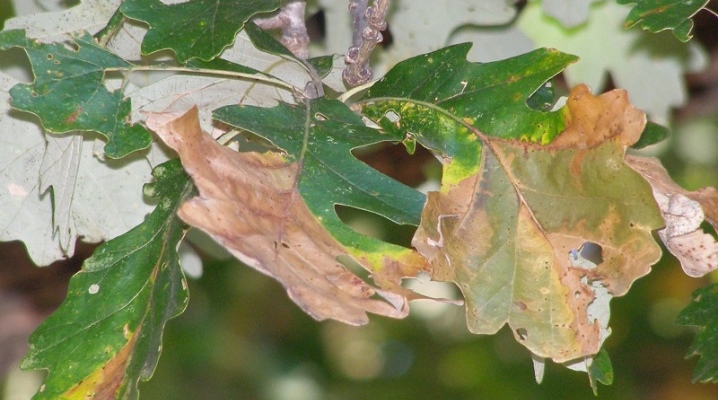
Oak - deciduous massive tree. It can often be found on city streets, in parks, squares and various recreation areas, personal plots. This tree, like any other species, is susceptible to disease and pest attacks. If appropriate treatment measures are not taken in time, it may die. To prevent this from happening, it is important first of all to learn how to recognize oak diseases.

Overview of diseases
Oak is characterized by 2 types of infectious diseases - rotten and rotten... The former include various vascular diseases, growths on trunks and branches, ulcers, necrosis. Non-rotting diseases often lead to the drying out of the tree and its complete death. In addition, the causative agents of necrosis are able to quickly spread to the oak trees growing nearby. Vascular diseases are the most dangerous for trees. They quickly infect tissues and can destroy an oak in a matter of months. The appearance of formations and ulcers is often caused by attacks by fungi and bacteria. In this case, the tissue is damaged slowly, however, if no treatment is taken, the oak will disappear.
Diseases also include the appearance of rot on branches, trunks, bark and root system. In addition, trees can attack pests. They are conventionally divided into primary and secondary. The former attack healthy crops, the latter most often attack immunocompromised oaks and young plantations. In addition, various parasitic fungi can grow on trees. Their myceliums are able to grow rapidly, penetrating into the thickness of the wood - as a result, its structure becomes loose.
Common parasites include hypocreia, tinder fungus, curly griffin. Here are some of the most common diseases.
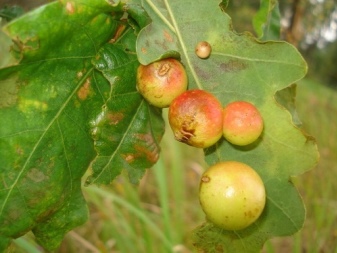
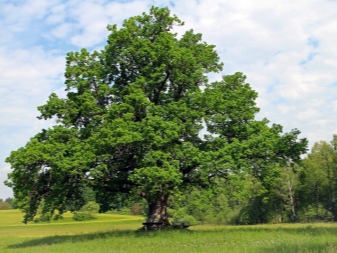
Gallica
A disease caused by the attack of the insect of the same name, visually resembling a small midge. The appearance on the leaves of pink-yellow balls the size of cherries - galls - will tell about this disease... They are popularly called "oak apples". Such growths are formed as a result of insect bites and laying eggs inside the leaf. Over time, a small ball appears in this place, inside which there is a pest larva.
A tree infected with gall midge can be "covered" with such formations. Gauls lead to disruption of the natural process of photosynthesis. They are able to deform young plantings and lead to the death of the formed ovaries and buds.
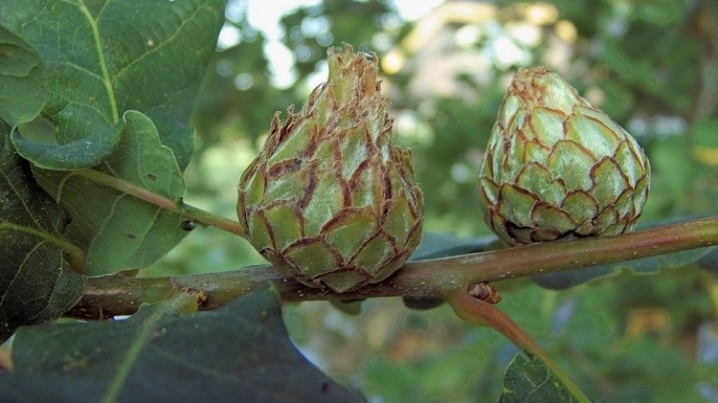
Powdery mildew
Another name is peronosporosis... This is a fungal disease that affects the foliage of the tree, young shoots, and in the last stages - the bark. It is caused by the fungus Microsphaera. If the leaves become covered with a white coating, similar to flour or dust, we can talk about infection of the oak with peronospora.
When a tree is affected by powdery mildew, its leaves dry out and gradually lose the ability to photosynthesize. Oaks of any age are susceptible to the disease, however, young specimens under 30 years of age are at greater risk. The weakened immunity of the tree caused by various pests and other diseases can aggravate the situation. And also in the risk zone are oak trees growing in unfavorable conditions, for example, in dense forests or in darkened areas, in soils with stagnant water.
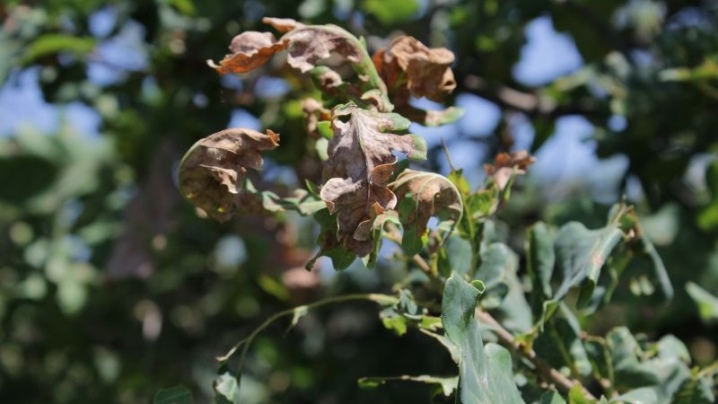
Mycosis
This is an infectious disease, which is characterized by damage to the oak water supply system. More than 20 oak species are susceptible to disease. It is caused by the marsupial mushrooms of the genus Ophiostoma.... The disease most often occurs in a chronic form, less often acute. The latter form is characterized by wilting of foliage from the branches and the rapid spread of the lesion throughout the crown. Initially, the foliage curls around the edges, after which it turns yellow and falls off after a few weeks. Soon, young shoots die off, the disease passes into the trunk of the tree, and it dies.
In the chronic form of the disease, the crown dies off gradually.... In this case, the drying process begins from individual branches. At the same time, the foliage on them decreases in size, turns yellow and falls off. Infection of oak trees with vascular mycosis occurs through bark beetle pests, which carry fungal spores on their paws.
And also the disease passes from diseased trees to healthy ones through the contacting root system. In addition, the spores of the fungus can be carried by wind or water.
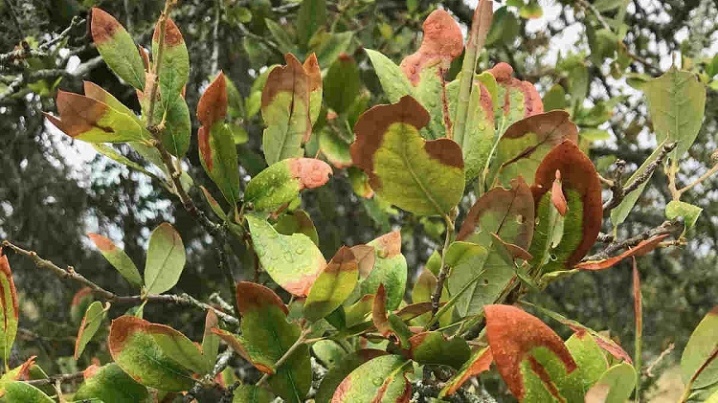
Brown spot of oak
The disease is caused by the fungus Discula umbrinella... Various varieties of oaks are susceptible to it. External signs:
- the formation of yellow-green spots 2-4 mm in size, having a round or irregular shape;
- the gradual acquisition of brown spots;
- the formation of conical beds (yellow-brown pads) on the inner side of the leaf.
Over time, the spots spread over the entire leaf area. The fungus also often spreads to fruits. It hibernates on fallen leaves. In the spring, perithecia appear on fallen leaves, in which spores mature.
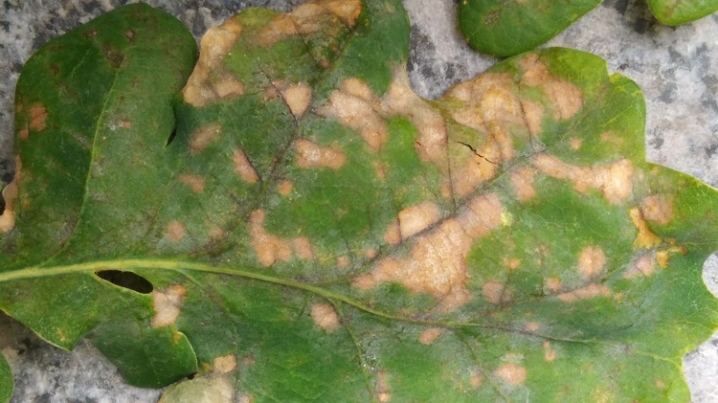
Other
Various types of oak trees are often affected by necrosis. They are characterized by the gradual dying off of the bark. Such diseases are caused by fungi that penetrate the tissues through damage to the bark. The most common types of necrosis include:
- willeminium - leads to cracking of the bark and the formation of sticky yellow or brown films;
- kolpomovy - leads to the death of areas of the bark in the form of stripes.
Various vascular diseases are also caused by fungi and pests. They damage the conductive system of the oak - in this case, dark spots or rings can be found on the cut of wood.
Oak trees often suffer from cancer - in this case, ulcers and growths of various sizes form on their trunk and branches. The most common are such varieties.
- The cancer is stepped. This disease is characterized by the dying off of the cortex, followed by the formation of grading. The sizes of wounds vary widely and can reach 1 meter.
- The cancer is transverse. The external signs of the disease are the appearance of large growths on the trunk, which grow and crack, due to which open wounds are formed.
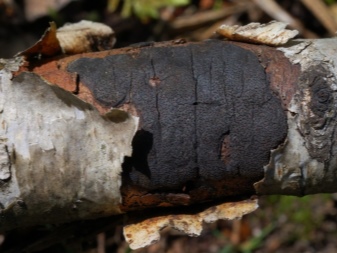
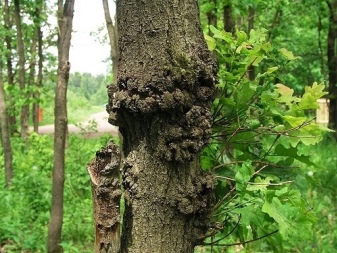
Neoplasms on the trunk are not capable of leading to the death of the tree. The development of cancer is very slow - it will take more than one decade for the growth of influxes. However, the growths on the tree often crack, and the resulting open wounds can penetrate fungal spores, as well as pests that can destroy the tree.
Oaks are also susceptible to rotting diseases affecting the root system and trunks. Most often, rot spreads in the lower stem. If you do not take timely measures to treat the tree, it will quickly weaken and dry out.
Rot, which oaks are susceptible to:
- sapwood white;
- dark brown;
- red-brown;
- white sound and others.
It is difficult to recognize the presence of rot by external signs, but they are clearly visible on a cut of wood - it is soft and friable. The affected tree easily disintegrates into fragments. The appearance of damage to the bark, for example, the formation of hollows and dry slopes, will also tell about the disease.
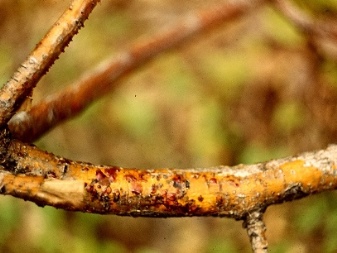
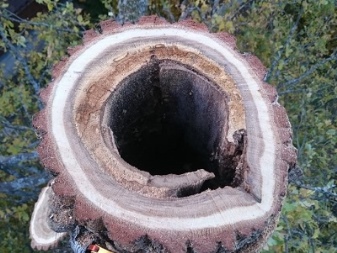
Description of pests
Numerous insect pests infest the oak. Here are the most common ones.
- Common oak walnut... This is an insect, the length of which reaches 2-3 mm. It has a black color, the abdomen is flattened from the sides.The nutcracker lays eggs in the thickness of the leaf, from which white larvae 1.5 mm long appear. They feed on the tissues of the stems, which can later dry out and break.
- Oak hawk moth. This is a moth family butterfly. The body of the insect is soft, covered with nap. Females, unlike males, are characterized by larger sizes - their length can reach 11 cm. The female is able to lay up to 50 eggs at a time. The formed caterpillar eats only oak leaves (while the butterfly itself does not feed - it lives thanks to the supply of nutrients accumulated by the caterpillar).
- Cocoon moth... Butterflies are 26-38 mm in size. Females lay eggs from which caterpillars hatch. They actively eat oak foliage, causing it to dry out.
- Goldtail... A white butterfly whose larvae devour the foliage of oak trees. Caterpillars have a bright black-gray color, their length reaches 4 cm. Numerous individuals are able to leave an oak without foliage.
- Green leaflet... Pale green butterfly. Lays eggs on an oak tree. The hatched caterpillars attack the buds, the grown insects actively eat the foliage.
- Pests of the bark and trunk pose a great danger to oak trees. The most common of these is sapwood (subspecies of weevil). This beetle belongs to the subfamily of bark beetles. Has a wide habitat. The pest is widespread throughout Russia and Europe. Most often, sapwood affects young oak trees with a trunk diameter not exceeding 20 cm. Less often they "attack" old trees or trees weakened by various diseases.
- Popular bark beetles also include oak beetles.... These are small bugs, the length of which does not exceed 15 mm. They lay larvae, feeding on the bark and wood of oak. They often attack immunocompromised trees.
Rare types of pests of trunks are oak motley barbel. Female insects lay eggs in oak bark. Hatching, the larvae bite into the bark and make passages in the tissues. They live in the thickness of the wood for 2 years, and by 3 the larva turns into a pupa. The beetle feeds on oak sap for a certain time, after which it flies out for mating and laying eggs.
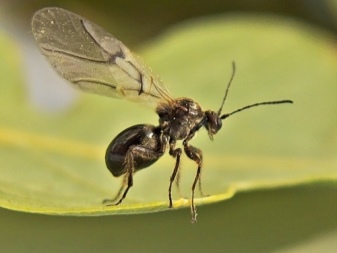
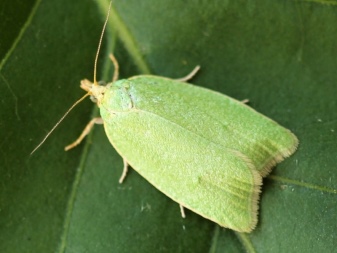
Treatment features
Many gardeners ask themselves: what to do with an oak disease, how to deal with various pests? It should be noted that it is not always possible to cure trees. If the leaves curl, turn black, shine or stick, you need to treat the oak as soon as possible - otherwise, the chances of its recovery are significantly reduced. It is advisable to treat fungal diseases such as powdery mildew or brown spot when the first signs appear. In this case, you need to spray the tree with sulfur preparations or systemic fungicides. If the disease manifested itself more than a week ago, it is necessary to remove the damaged tissues and leaves, as well as replace the top layer of soil in the near-trunk circle. After that, you can treat the oak with the following preparations: Vitaros, Topaz, Fundazol.
The use of insecticide preparations will help get rid of various pests. To do this, you need to dilute the product according to the instructions, and then spray the oak with a spray bottle. When an active chemical enters a larva or an adult, the pests die. Experienced gardeners recommend treating trees for prevention. It is best to spray the trees in the spring. If necrosis or vascular diseases appear on the oak, the tree will no longer be able to help. To avoid the occurrence of these diseases, it is important to carry out preventive measures in a timely manner, which include regular pruning of trees, patching up wounds with garden varnish or treating injuries with bactericidal preparations.
To reduce the risks of pest attacks and the spread of fungal diseases, it is necessary to annually destroy fallen leaves, as well as remove and burn affected foliage and branches.


In the next video, you will find additional information on vascular mycosis of oak.



































































The comment was sent successfully.